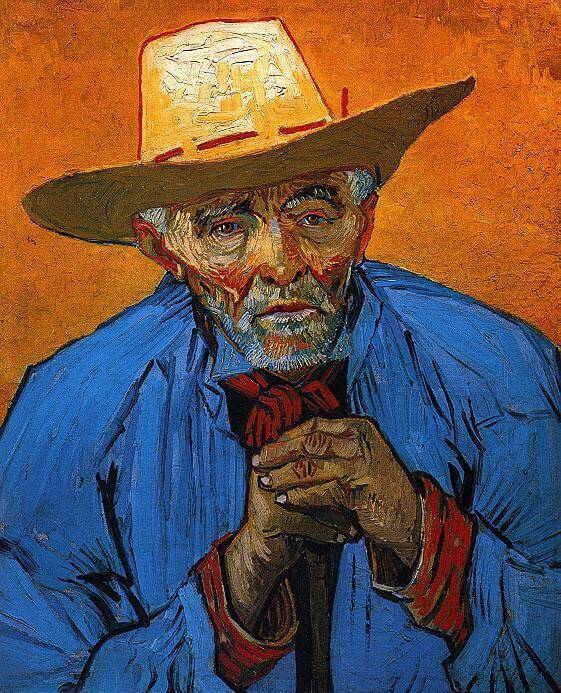Portrait of Patience Escalier, 1888 by Vincent Van Gogh

Whereas in Paris Van Gogh had been able to draw on a stock of willing sitters from among his acquaintances to enable him to practice the art of portrait painting, as a stranger in Arles he was often dependent in the first few months on models who expected something in return for posing for him - sometimes the portrait itself, sometimes hard cash. As on previous occasions, Van Gogh looked for characteristic 'types' to suit his purpose. Around 8 August, for example, he had set his heart on painting 'a poor old peasant'. The Paris art dealer Thomas had recently bought a work entitled The Peasant from Anquetin, a fact which Van Gogh perhaps saw as justification for his choice of motif: there would appear to be a market for peasants. The peasant on whom Vincent's choice had fallen, however, proved unreasonable in his demands, and a few days later the artist succeeded in finding an alternative candidate of a similar type. His name was Patience Escalier, 'formerly a cowhand in the Camargue, now a gardener at one of the farms in La Crau', and he would appear to have been a less demanding model. The painter was so taken with the latter's portrait that he immediately informed Theo about it.'
Portrait of Patience Escalier, in close focus and not dissimilar in concept to his early Dutch paintings of peasants and laborers. Now, however, his use of color was as expressive as his use of line and form, and so it is that the simple complementary blues, oranges and yellows of this painting are as visually impacting as the sensitive depiction of an old, honest man.
He wrote to Theo and explained, 'I should like to paint men and women with that certain something of the eternal, which the halo used to symbolize and which we seek to achieve by the actual radiance and vibration of our colorings.' He strove to paint the spirit of his subject and painted as things touched him in one way or another, so that every work he did was in some way a reflection of his own subconscious self.




















